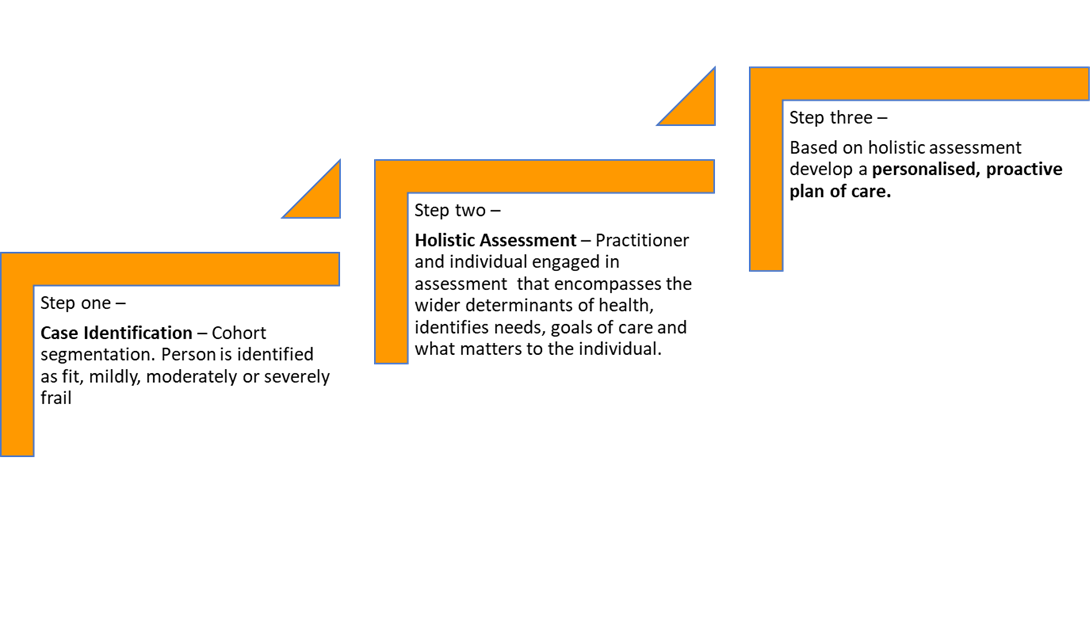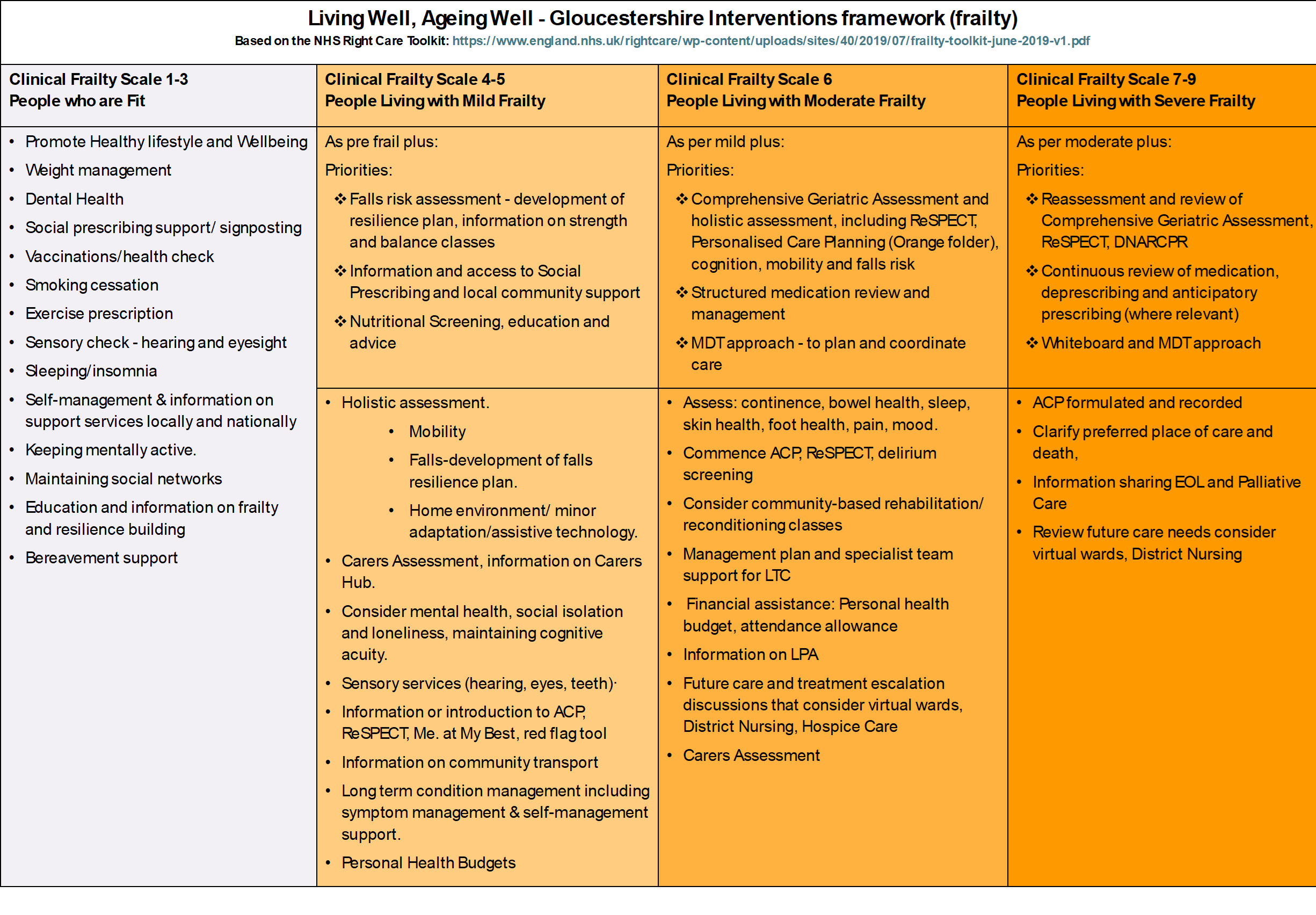The Interventions Framework for Gloucestershire has been developed based on the national Right Care Toolkit. Below you’ll find information on the Framework and guidance on how to use it.
Introduction
The Gloucestershire Interventions Framework (GIF) is a practical, evidence-based tool designed to support health and social care practitioners in delivering consistent, person-centred care for individuals at risk of or living with frailty. Adapted from the NHS RightCare Frailty Toolkit, the GIF consolidates best practice into a single-page reference, aligned with Gloucestershire’s local priorities.
Frailty is a dynamic condition that can significantly impact an individual’s independence, wellbeing, and use of health or care services. The GIF enables practitioners to tailor interventions based on the person’s level of frailty, ranging from fit to severely frail, ensuring that care is proactive, holistic, and responsive.
By guiding practitioners to implement targeted actions, such as the completion of a comprehensive geriatric assessments, or using an multidisciplinary approach care—the GIF supports the overarching goals to:
- Delay the onset of health deterioration
- Maintain independent living and improve quality of life
- Reduce avoidable exacerbations of ill health and unplanned care
The framework is not just a checklist—it’s a strategic approach to ageing well and living well, empowering practitioners to make a meaningful difference in the lives of older people across Gloucestershire.
How to use the GIF

Step one – Case/population segmentation
Apply a systematic case finding approach to identify the levels of frailty in the chosen population, PCN, age group or cohort. You can use tool such as the Electronic Frailty Index (eFI) eFI identifying frailty to categories people into fit, mild, moderate or severe frailty based on number of deficits. Frailty Deficits
Step two – Holistic Assessment
A validated tool such as the Clinical Frailty Scale/Rockwood can be used with an individual to confirm the level of frailty. In addition tools such as Clinical Frailty Scale/Rockwood, Timed up and Go, (TUG test) , TURN 180, PRISMA 7 (PRISMA), CGA, 6CIT 6 CIAT, ACP, ReSPECT, (Social care tools). Will support the development of a holistic view of the individual. The gold standard in care is to incorporate this information in to the development of a Comprehensive Geriatric Assessment, this approach helps ensure that needs, including the wider determinant of health Wider determinants of health are incorporate into the assessment process.
Step three – Personalised plan of care
Using the information gathered, the goals, outcomes and priorities as identified by the individual are detailed in a personalised plan of care, focusing on a strength based, resilience building, approach. The GIF can be used to shape plans, goals and actions. It can help practitioners embrace a systematic evidenced based approach.
Practitioners should ideally work from left to right across the framework (from fit to severe) this will ensure that every opportunity to build strength, resilience and improve wellbeing has been maximised. The GIF is only a guide and practitioners will be expected to apply the framework based on knowledge of the individual and their level of skill and competence.
N.B
The clinical frailty scale Rockwood light care toolkit has been designed for use for people aged 65 and over. However, it may be helpful as guide along with practitioner assessment to guide activity and intervention with people aged 64 and under.


